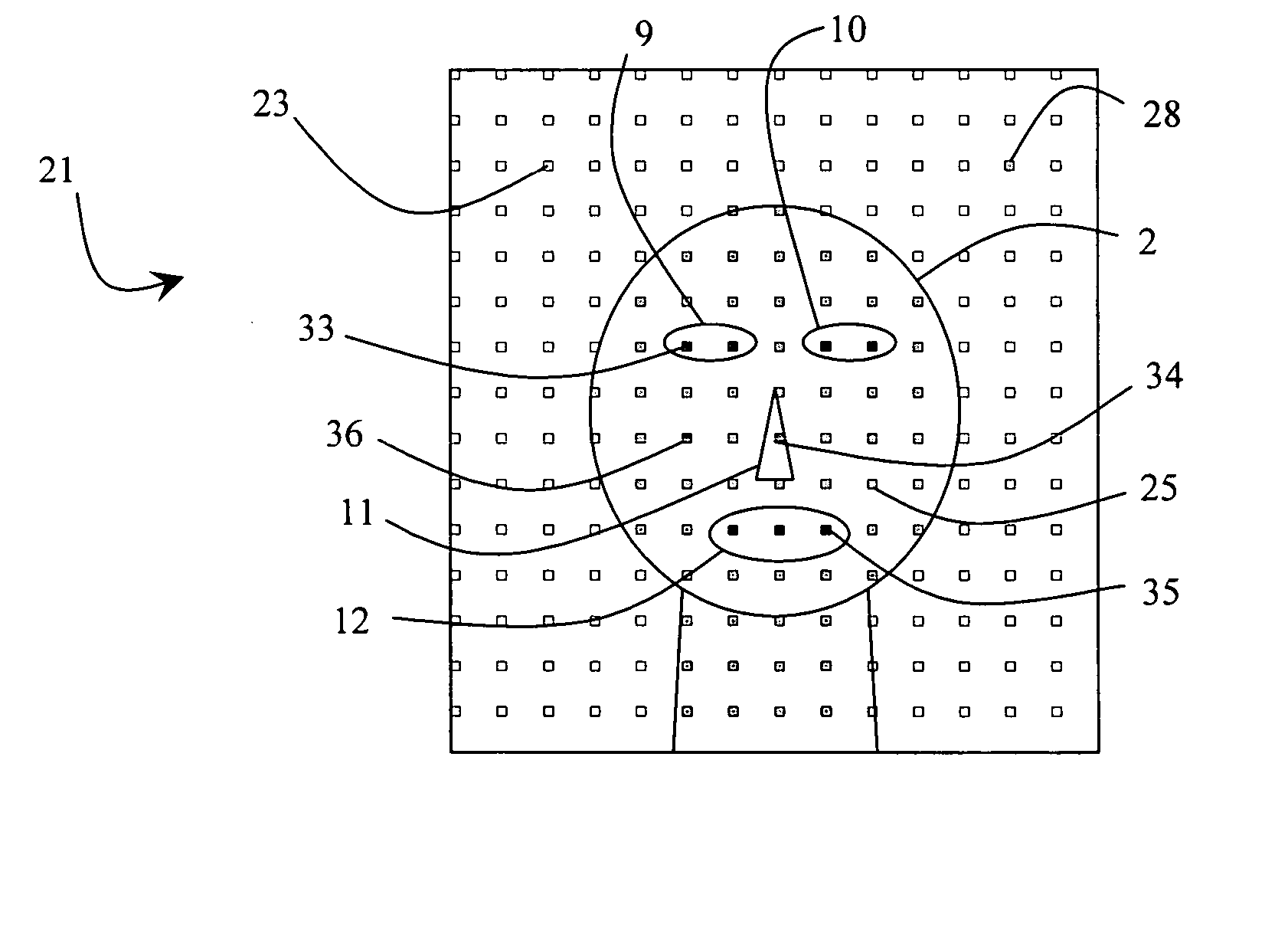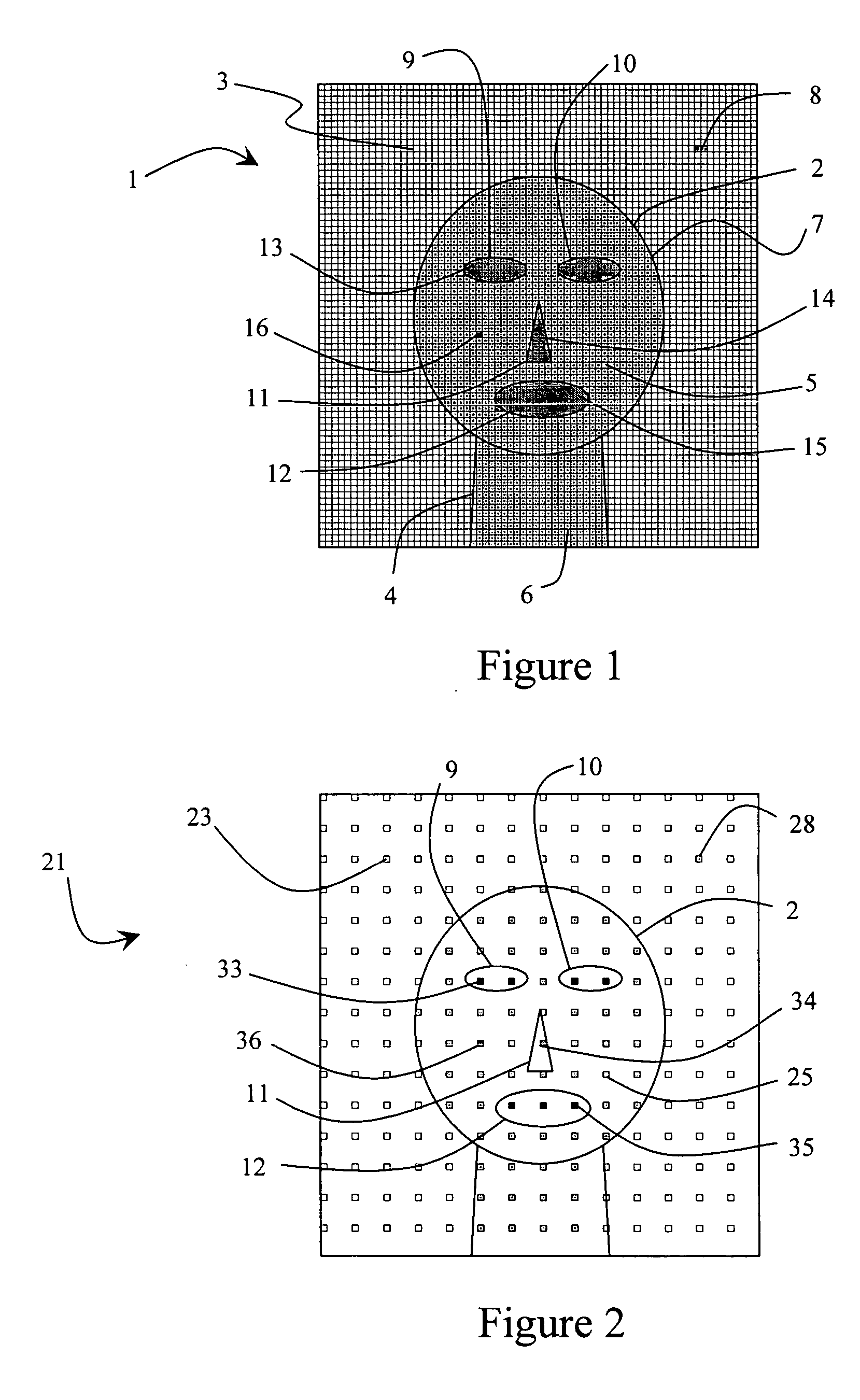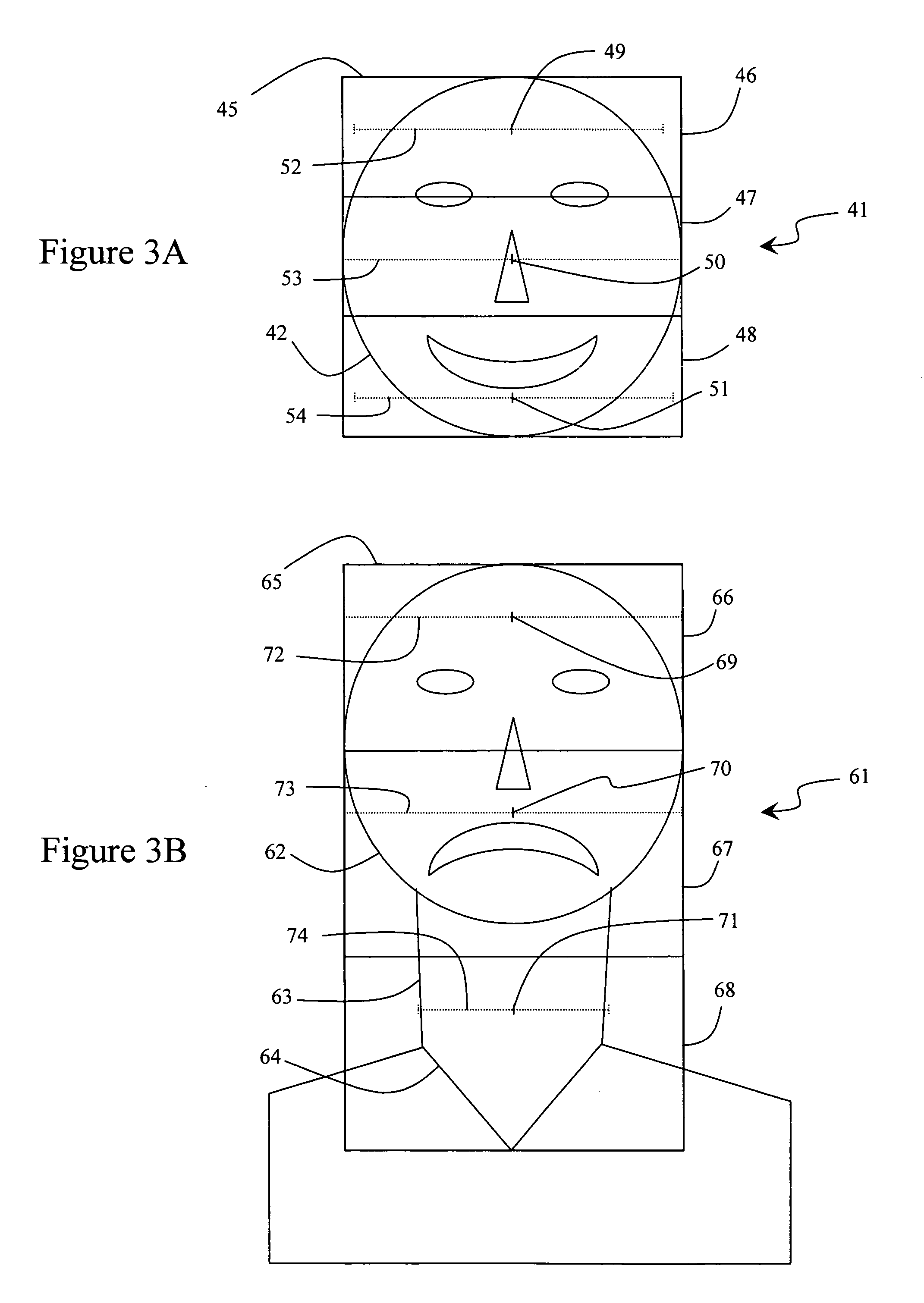Face detection in digital images
a technology of face detection and digital images, applied in image data processing, television systems, instruments, etc., can solve the problems of much more time-consuming operation, and achieve the effect of reducing computational complexity and overall efficiency
- Summary
- Abstract
- Description
- Claims
- Application Information
AI Technical Summary
Benefits of technology
Problems solved by technology
Method used
Image
Examples
Embodiment Construction
[0057]FIG. 1 is a schematic representation of an exemplary digital image 1 of a face 2. The image 1 is formed of 70×75 pixels 3. It will be understood that, in practice, digital images have far more pixels than shown in FIG. 1: typical images range from 160×240 pixels upwards to 12 Megapixels (e.g. 3000×4000 pixels) or even more. However, the principle of the image can be seen from FIG. 1.
[0058] As can be seen from FIG. 1, the image includes a face region 2 and neck region 4. The pixels 5, 6 within the face region and neck regions are the colour of human skin, or “skin tone” pixels. The face and neck thus together form a “skin tone region”7. The range of colours (or RGB values) of skin tone pixels varies from light to dark so as to include different skin types and lighting conditions, but is still small compared to the full colour range possible. Due to the need to cover all (or most) skin types, many non-skin pixels also fall within this range—examples include those found on light...
PUM
 Login to View More
Login to View More Abstract
Description
Claims
Application Information
 Login to View More
Login to View More - R&D
- Intellectual Property
- Life Sciences
- Materials
- Tech Scout
- Unparalleled Data Quality
- Higher Quality Content
- 60% Fewer Hallucinations
Browse by: Latest US Patents, China's latest patents, Technical Efficacy Thesaurus, Application Domain, Technology Topic, Popular Technical Reports.
© 2025 PatSnap. All rights reserved.Legal|Privacy policy|Modern Slavery Act Transparency Statement|Sitemap|About US| Contact US: help@patsnap.com



